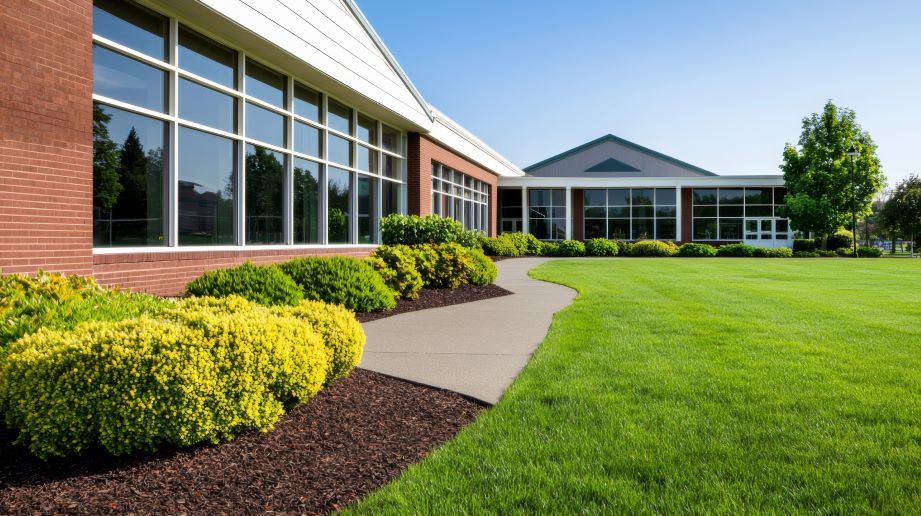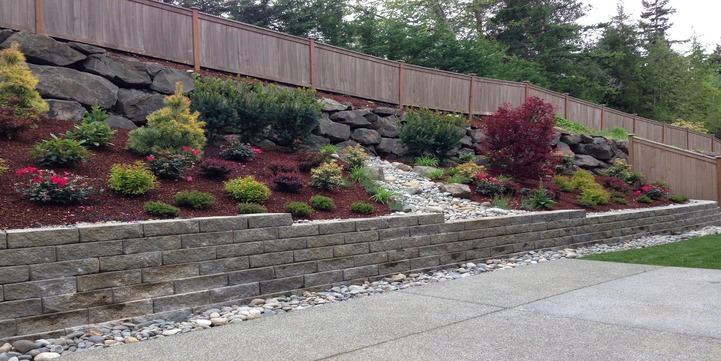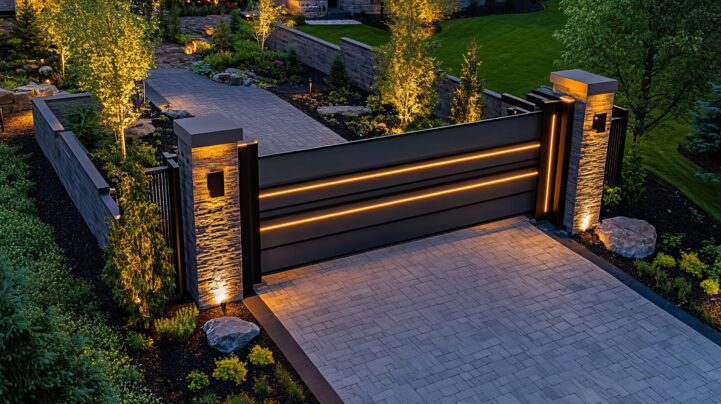Ever notice how some businesses look welcoming year-round while others give up after summer, leaving their properties tired and neglected through Oregon’s rainy months? Pacific Northwest commercial properties face a unique challenge: our mild climate means customers expect landscapes to look good all year, yet most business owners don’t know how to maintain appealing outdoor spaces through wet winters and dry summers. Successful Oregon businesses plan their color displays like marketing campaigns, thinking strategically about what message their landscape sends every season.
The Real Cost of Seasonal Landscape Neglect
Walk through any Oregon business district in February, and you’ll see the difference immediately between properties that plan for year-round appeal and those that don’t. Neglected properties often feature empty planters, brown grass, and bare flower beds. These businesses might save money on plant purchases, but they lose something more valuable: the trust and interest of potential customers. Properties with year-round color planning tell a different story: fresh pansies by the entrance signal attention to detail, colorful winter displays suggest a business that cares about first impressions, and these visual cues influence customer decisions before anyone speaks a word.
Oregon’s temperate climate gives us advantages other regions don’t have. We can grow plants through winter that die in harsher climates. This opportunity becomes a responsibility when customers know what’s possible and expect more from local businesses.
Oregon’s Climate Advantage for Commercial Landscapes
The Pacific Northwest offers unique conditions that support continuous color displays. Understanding these advantages helps business owners make smart decisions about plant investments. When you work with Oregon’s natural climate patterns instead of against them, you reduce maintenance costs while creating more impressive landscapes.
- Moderate winter temperatures: Oregon’s coastal influence keeps winter temperatures mild compared to inland regions. Most commercial areas rarely see prolonged freezing, which means cold-hardy plants can bloom through winter months.
- Extended planting windows: While businesses in harsh climates have narrow planting windows, Oregon properties can install new plants almost any month. This flexibility allows for continuous refreshing of displays without waiting for specific seasons.
- Natural rainfall patterns: Oregon’s wet winters reduce irrigation costs during months when other regions require heated greenhouses. This natural watering system supports winter plant growth without additional utility expenses.
- Diverse growing zones: Within single metro areas, Oregon offers multiple microclimates. Coastal businesses can grow different plants than those in valleys or foothills, creating opportunities for unique displays that reflect local conditions.
Low-Maintenance Plants for Busy Commercial Properties
Commercial properties need plants that provide maximum visual impact with minimum ongoing attention. Smart selections reduce maintenance costs while ensuring consistent appearance. The best commercial plants establish quickly, handle Oregon’s weather variations without special care, and continue looking attractive even when maintenance schedules get delayed. This reliability becomes especially important during busy seasons when property managers have limited time to address landscape issues.
Reliable Annual Performers
- Begonias bloom continuously from spring through fall with basic care. Wax begonias handle full sun while rex begonias offer dramatic foliage in shaded areas.
- Marigolds produce bright flowers for months while requiring minimal water once established. Their strong fragrance also helps deter some garden pests naturally.
- Sweet alyssum creates carpets of tiny flowers in white, pink, and purple. This plant self-seeds and often returns the following year without replanting.
Perennial Investments
- Daylilies provide weeks of blooms with different varieties extending the flowering season. They multiply over time, increasing value rather than requiring replacement.
- Ornamental grasses like fountain grass and feather reed grass offer movement and texture year-round. Annual cutting is their only major maintenance requirement.
- Lavender produces fragrant purple spikes while handling drought conditions. Regular harvesting encourages additional blooms and provides aromatic material for indoor use.
Oregon natives like sedum and coral bells establish quickly in local soil conditions while requiring less water, fertilizer, and pest control than non-native alternatives. These plants support local ecosystems by providing food and habitat for beneficial insects and birds, creating dynamic, living landscapes that change throughout seasons. Regional adaptation means native plants handle Oregon’s weather patterns without special protection during unusual cold or heat periods.
Strategic Seasonal Rotation for Oregon Properties
Effective color rotation requires understanding Oregon’s unique growing patterns and planning installations around local weather cycles. Unlike regions with harsh winters, Oregon allows for nearly year-round planting opportunities, but timing still matters for plant success and cost efficiency. The most successful commercial properties create rotation schedules that work with nature’s rhythms rather than forcing plants to perform outside their optimal growing windows.
Spring Implementation Strategy
- Begin spring transitions in February when the soil starts warming, but the air temperatures remain cool. This timing allows plants to establish before summer heat arrives.
- Remove winter displays gradually rather than all at once. Keeping some cold-hardy plants while adding new ones creates smoother transitions and continuous color.
- Prepare soil during dry February periods rather than waiting for March rains. Working dry soil prevents compaction and creates better growing conditions.
Summer Transition Timing
- Wait until mid-May for heat-sensitive plant installations. Oregon’s unpredictable late-spring weather can damage tender plants installed too early.
- Choose plants that handle dry summers without constant irrigation. Water restrictions and sustainability concerns make drought-tolerant selections essential.
- Establish summer displays before peak heat arrives. Plants installed during cool weather develop stronger root systems and handle summer stress better.
Fall Color Development
- September offers ideal planting conditions in Oregon. Warm soil and cooling air temperatures reduce plant stress while encouraging quick establishment.
- Install fall displays before October rains begin. Wet weather makes planting difficult and can damage newly installed plants.
- Overlap fall and winter plants for extended color. Some fall flowers continue blooming into winter while cold-hardy plants establish.
Winter Preparation Process
- Focus October efforts on winter plant installation rather than protecting summer plants. Oregon’s mild winters support active growth rather than dormancy.
- Clean beds thoroughly before winter plant installation. Removing debris prevents disease problems during wet months.
- Adjust irrigation systems for winter conditions. Reduced watering needs during rainy months prevent root rot and fungal problems.
Professional Partnership Benefits
Working with landscape professionals who understand Oregon’s specific growing conditions transforms seasonal color programs from costly experiments into strategic investments. Local expertise prevents expensive mistakes like choosing varieties that fail in Oregon’s climate or planting at the wrong times, leading to better plant performance and reduced replacement costs.
Professional landscape partners coordinate color rotations with regular maintenance activities through integrated scheduling that reduces labor costs while maintaining consistent property appearance. This comprehensive approach means seamless seasonal transitions and a single point of contact for all landscape needs, rather than coordinating multiple vendors yourself.
Creating Year-Round Success for Your Oregon Business
Your commercial property makes an impression every day, regardless of season or weather. Strategic seasonal color planning ensures those impressions support your business goals throughout the year. With proper plant selection, sustainable practices, and professional support, Oregon businesses can maintain attractive, welcoming landscapes that contribute to success year-round.
Transform your commercial property with professional seasonal color planning. Contact Oasis Landscape at (503) 998-9183 or lorenzo@consultlegends.com to develop a year-round color program that keeps your business looking exceptional every season.




